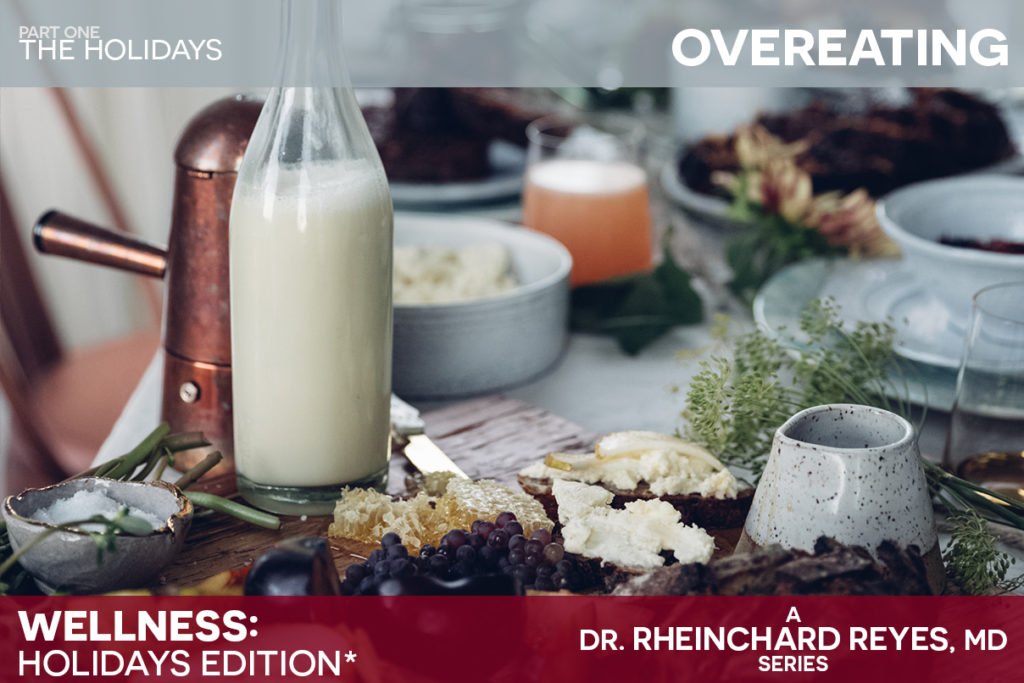It’s that time of year again- the time for gatherings, toasts, “cheat meals” and oh, so many sweet treats! Media reports and surveys suggest that the average person will pack between 5 and 10 pounds between Thanksgiving and Christmas but studies show the average weight gain to be just one pound. While that number doesn’t set off alarms for most of us, it’s important to be mindful of the eating habits we create during this time. According to research, most people never lose the weight gained during the holidays and carry it throughout their lives.
It may seem close to impossible to maintain any type of balance and regularity when it comes to nutrition around this time of year. How can one keep up with all the holiday demands AND balance healthy meals? It all comes down getting informed and having a plan.
Hidden calories
Between the work party, get-togethers with friends, and the visits to relatives, it’s difficult to keep track of all the calories you’re consuming, especially when you’re not the one preparing your meals/drinks. Below are some of the most popular dishes during this time and their average caloric value for reference. Be mindful of any additional sauces or toppings you may use to compliment your meals and factor them into your estimations.
|
Food Item |
Serving Size |
Calories |
|
Roasted turkey (no skin) |
4 oz. |
190 |
|
Baked ham (fresh) |
4 oz. |
345 |
|
Steak (lean, broiled) |
5.5 oz. |
310 |
|
Cornbread |
1 roll |
106 |
|
Bread stuffing |
1 cup |
355 |
|
Mashed potatoes |
1 cup |
238 |
|
Sweet potato casserole |
1 cup |
276 |
|
Green bean casserole |
1 cup |
143 |
|
Cranberry sauce |
½ cup |
209 |
|
Pumpkin pie |
1 small slice |
323 |
|
Apple pie |
1 small slice |
356 |
|
Pecan pie |
1 small slice |
456 |
|
Bread pudding |
1 cup |
303 |
|
Eggnog (no alcohol) |
1 cup |
350 |
|
Butter |
1 tbsp. |
102 |
|
Whipped cream (pressurized can) |
1 cup |
184 |
Listen to your body
Not only is counting every calorie you consume during this period unrealistic, it’s not the only way to gauge whether you’ve eaten too little or too much. Your brain and stomach work together to let you know how much is enough.
Your stomach can hold up to 17 cups of volume but the feeling of fullness that comes after enjoying a meal is produced by your brain. When you eat or drink, chemical signals are sent to the brain letting it know you’ve ingested something, causing you to feel a slight pressure in your stomach. It takes about 20 minutes for your brain to register these chemicals, their levels then continue to build for up to 30 minutes and remain elevated for up to five hours. Once the chemical levels drop, the feeling of hungers returns.
When you eat, pay attention to how your body responds after a few bites. As you begin to feel full, you will feel a gentle pressure in your stomach. If you continue to eat past this point, you will end up overeating and experience the discomfort that comes with it. It is recommended that you wait 20 minutes to let the “full” signal reach your brain before deciding if you need more food.
Be mindful of your health and nutritional balance but also remember to be kind to yourself- if you feel you’ve overindulged at any particular time, look for the next opportunity to get back on track. As always, talk to your medical physician about any concerns.
Sources:
- http://healthyeating.sfgate.com/stomach-full-stop-eating-3080.html
- https://well.blogs.nytimes.com/2007/11/22/the-skinny-on-holiday-weight-gain/
- https://caloriecontrol.org/popular-holiday-dishes/
- https://www.webmd.com/food-recipes/features/diet-busters-ten-high-calorie-holiday-drinks#1


